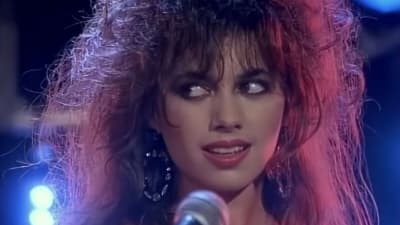
The growth of NBA basketball has been exciting and impressive, but can there be such a thing as too much progress? As far as BJ Armstrong is concerned, there is, and putting a premium on three-point shooting is the culprit. The three-time NBA champion spoke about his thoughts on The Hoop Genius Podcast with Mo Mooncey and did not mince words.
"Now, we hear NBA personnel, executives, head coaches, analytic people, presidents of teams, general managers of teams, tell me to my face, Mo. They look at me with a straight face and said the following: a two-point shot is a bad shot," the former Chicago Bulls guard opened up. "Woah! A two-point shot now, is a bad shot. Well, I made it. (What if) I'm shooting 60% (from the two-point area). Well, that's a bad shot. We only want three shots. We want the corner threes, layups, okay, or we want to get to the free-throw line.
BJ couldn't wrap his head around the modern logic
Armstrong played in the Association from 1989 to 2000, so he admittedly needed help understanding the method behind that madness, if there was any. The only solution was to watch the games and see for himself. Shooting threes was alright, but to say a two-point midrange shot is outright "bad" doesn't fit with the sport he knew.
"I quietly watched over the years so that I can understand, but all I know is the best players all shot mid-range shots. Why? Because, Mo, you gotta have an imagination to say, 'What is the defense giving me?' Or am I coming to the game with a predetermined mindset to say this is what we're gonna do. So when I go watch the game, there is no more creativity, there is no more imagination. It's just that we have basically robots running up and down the court," the 1994 NBA All-Star added.
"The Kid" summarized the game plan of most teams: Try to get a layup or get fouled, and if they couldn't, kick the ball out and shoot threes. For Armstrong, this simplistic mindset paved the way for flopping and constant complaining to the officials. BJ may sound like a hater to the new generation, but those are all compelling arguments. The best players always capitalized on what the defense offered, and when that meant mid-range shots, they confidently took—and made—them.
Has the three-point revolution gotten extreme?
The short answer to the question is, yes, it has. The fact of the matter is that it isn't only Armstrong who thinks the so-called three-point revolution has gotten out of hand. According to Ben Golliver and Artur Galocha, Phoenix Suns forward Kevin Durant had reservations about the trend.
"That's a fine line a lot of teams are having this season," Durant said, as per the article published in The Washington Post. "Do I come down on the break after a good [defensive] stop and pull a three over the top of two people? That's a question you've got to ask yourself. That is considered a good shot nowadays. But, really, is it? If you miss that ball, it's a fast break on the other end."
The rest of the NBA doesn't share with the Slim Reaper's reluctance. The Boston Celtics attempted more threes (910) than twos (707) through the first 18 games. As far back as their championship run last year, the Celtics attempted more twos (3,914) than threes (3,482) during the regular season. However, the defending champions are now disrupting that balance. If they successfully defend their title, we're likely to see a surge of NBA teams copying their approach.
The three-point shot is not as valuable as it once was
Believe it or not, a recent study shows that the "True Value" of a three-point shot has been decreasing since the 2017-18 season.
Research conducted by sports analytics professor Shane Sanders and associate professor Justin Ehrlich of the Falk College of Sport and Human Dynamics found out that "the expected value from average 2-point field goal attempts (FGA) is now worth 0.013 points more than average 3-point FGA, even before factoring in shot-pursuant free throw scoring. In other words, if you multiply the probability of making a 3-point FGA times the value of a 3-point FGA, it's worth less than if you multiply a 2-point FGA times the value of a 2-point FGA."
Based on the league average numbers from the 2022-23 season, the research team identified that the expected value from a two-point field goal attempt is 1.096 points, while the expected value of a three-point field goal attempt is 1.083.
Sanders and Ehrlich presented their findings back on March 1-2, 2024, at the MIT Sloan Sports Analytics conference, but NBA teams continue to rely more on three-point shooting than ever. As Armstrong noted, it's getting boring and predictable, which may explain why the ratings are down this season.
More must-reads:
- Report: Kevin Durant has mutual interest with one new team
- Timberwolves stars lead team to series lead vs. Warriors
- The 'Most 30-point NBA playoff games before age 22' quiz
Customize Your Newsletter
 +
+
Get the latest news and rumors, customized to your favorite sports and teams. Emailed daily. Always free!








